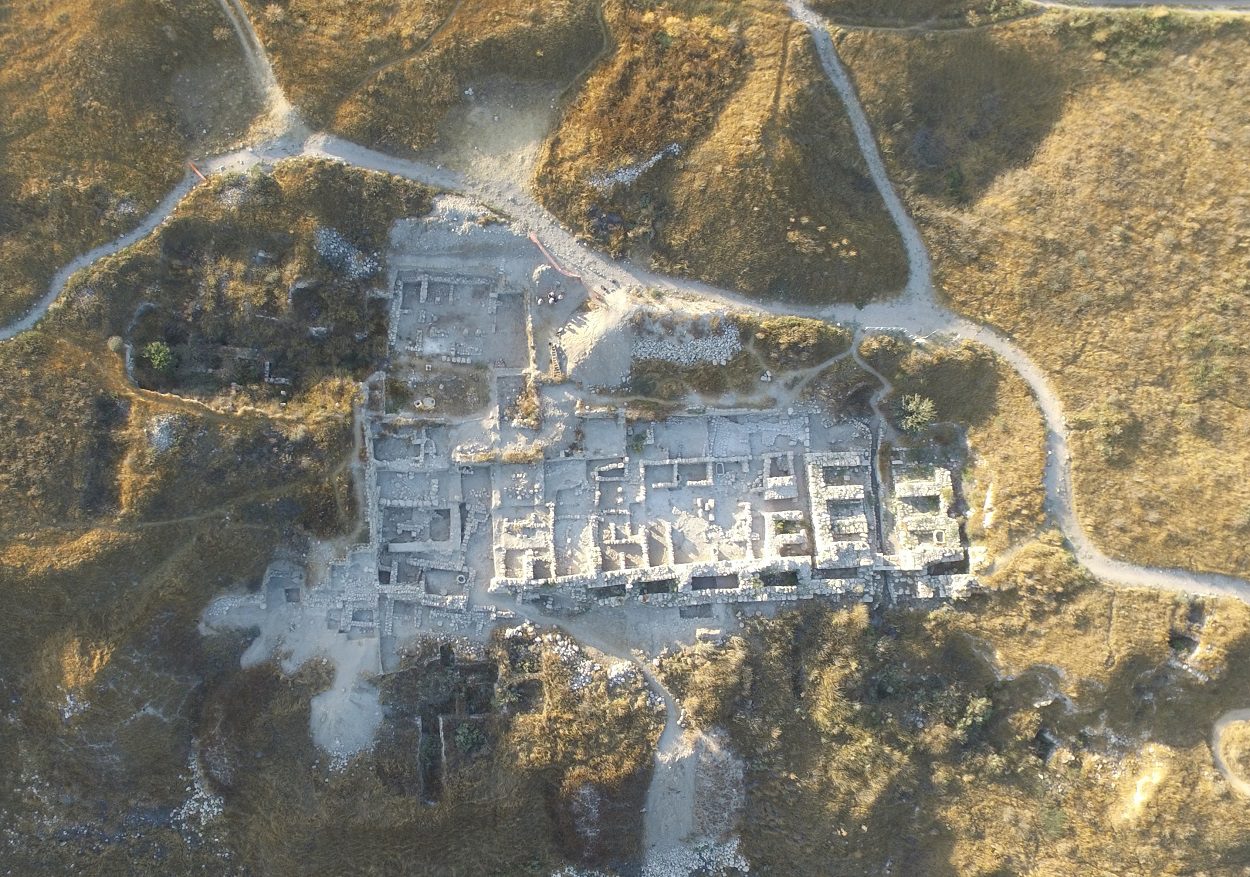Archaeologists have conducted radiocarbon dating of Tel Gezer, one of the most important Bronze and Iron Age sites in Israel.
Tel Gezer is located in the foothills of the Judaean Mountains at the border of the Shfela region.
The site was first occupied towards the end of the 4th millennium BC, when large caves were cut into the rock to be used as dwellings.
Major settlement occurred during the first half of the 2nd millennium BC, with the construction of a fortified Canaanite city surrounded by a massive stone wall and towers.
The city evolved into a significant religious centre, characterised by the presence of prominent standing stones named massebot. These massbot stones were erected alongside an altar-style construction and a substantial stone basin, possibly used for ceremonies involving libations (a ritual pouring of a liquid, or grains such as rice, as an offering to a deity).
The Canaanite city was devastated by a fire, likely resulting from a military expedition led by the Egyptian pharaoh Thutmose III (reigning from 1479 to 1425 BC). The earliest documented mention of the city dates back to an inscription listing conquered territories found at Thutmose’s temple in Karnak.
The city continued to hold significant strategic importance until the Roman period due in thanks to the advantageous location at the intersection of the ancient coastal trade route connecting Egypt to Syria, Anatolia, and Mesopotamia, as well as the pathway leading to Jerusalem and Jericho.
In a new study published in the journal PLOS ONE, archaeologists have used radiocarbon dating to investigate what extent of archaeological findings correspond to historical events from written sources.
The chronology of each phase of Tel Gezer has been based primarily on the comparison of ceramic styles and their connection to the political history of Egypt and Assyria.
Lyndelle Webster, an archaeologist from the Austrian Archaeological Institute of the ÖAW, said: “We took more than 75 measurements on charred seeds from several layers of settlement and destruction. The results of the 35 measurements from the Late Bronze Age and Iron Age strata published in our study date from the 13th to 9th centuries BC. “This allows us for the first time to place the history of Gezer on a fixed timeline.”
The results have been cross-referenced with historical events, such as instances of destruction, construction of new buildings, or fortification development, providing additional context.
The radiocarbon dates indicate that the city saw a period of destruction around 1200 BC, possibly in relation to a campaign of conquest by the Egyptian pharaoh Merenptah, or as a result of the Late Bronze Age collapse that brought a sharp economic decline to regional powers.
The study also contributes to the dating of the “Philistine” culture, which arose in the nearby coastal plain and is now believed to influence the region around Tel Gez in the middle of the 12th century BC.
According to the study authors: “Another discussion covers the transition to monumental public architecture and centralised administration at Tel Gezer. This change can now be dated to the first half of the 10th century BC and not just the 9th century BC as previously thought.”
Header Image Credit : Lanier Center for Archaeology





